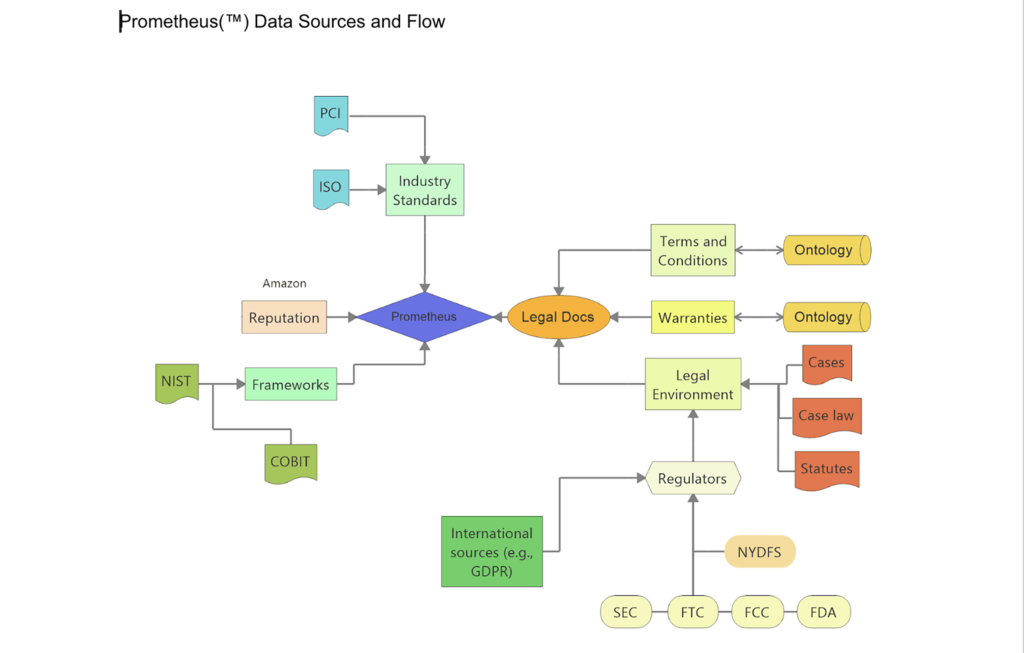AI and Computational Law: Key Points from my 2022 AIPLA Presentation
Below are a number of key points from my presentation at the 2022 American Intellectual Property Law Association mid-winter meeting. My talk was primarily structured around my paper Rise of the Intelligent Information Brokers: Role of Computational Law Applications in Administering the Dynamic Cybersecurity Threat Surface in IoT, 19 Minn. J.L. Sci. & Tech. 337 (2018). The AI-enabled computational law application (CLAI) that I modeled is called “Prometheus.”
Cybersecurity Labels: In the U.S., NIST is driving the development of cybersecurity labels. Current labeling schemas have a couple of shortcomings:
(1) They narrowly focus on product capabilities, but a product is more than just that. Its legal specs, which are derived from a wide array of sources (see flow chart below) are also important and constitute a part of its lifecycle. (This holistic view of a product is not novel. See, “Terms of use are no less a part of ‘the product’ than are the size of the database and the speed with which the software compiles listings, ProCD, Inc. v. Zeidenberg, 86 F.3d 1447, 1453 (7th Cir. 1996).)
(2) They provide static product information, whereas the information should be viewed as dynamic.
Product Metadata: Cybersecurity labels are useful in that they can function as product metadata, which can be analyzed by the CLAI app.
Machine Learning Data-Set: The CLAI app covers all informational sources that comprise a product’s legal specs. These function as the CLAI’s instructive dataset. These sources come from traditional and non-traditional sources.
Consumer Interface: CLAI app uses ML and NLP to analyze all of the informational sources. The consumer receives information from the app, through a variety of UI, such as flags or chat.

